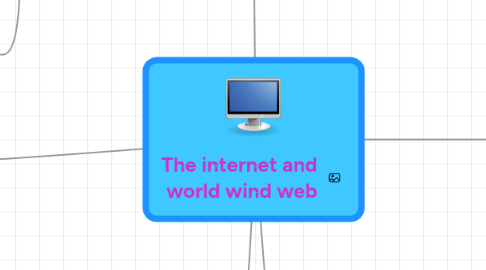The internet and world wind web
por Duangdeun Janvichai


1. Evolution of the Internet
1.1. The Internet originated as ARPANET in September 1969 and had two main goals
1.2. Each organization is responsible only for maintaining its own network
1.3. Internet2 connects more than 200 universities and 115 companies via a high-speed private network
1.4. Many home and small business users connect to the Internet via high-speed broadband Internet service
1.5. An access provider is a business that provides individuals and organizations access to the Internet free or for a fee
1.6. An IP address is a number that uniquely identifies each computer or device connected to the Internet
1.7. A domain name is the text version of an IP address
1.8. A DNS server translates the domain name into its associated IP address
2. The Internet
2.1. The Internet is a worldwide collection of networks that links millions of businesses, government agencies, educational institutions, and individuals
3. Other Internet Services
3.1. E-mail is the transmission of messages and files via a computer network
3.2. An e-mail program allows you to create, send, receive, forward, store, print, and delete e-mail messages
3.3. A mailing list is a group of e-mail names and addresses given a single name
3.3.1. Subscribing adds your e-mail name and address
3.3.2. Unsubscribing removes your name
3.4. Instant messaging (IM) is a real-time Internet communications service
3.5. A chat is a real-time typed conversation that takes place on a computer
3.6. A chat room is a location on an Internet server that permits users to chat with each other
3.7. VoIP (Voice over IP) enables users to speak to other users over the Internet
3.8. A newsgroup is an online area in which users have written discussions about a particular subject
3.9. A message board is a Web-based type of discussion group
3.10. FTP (File Transfer Protocol) is an Internet standard that permits file uploading and downloading with other computers on the Internet
3.11. Many operating systems include FTP capabilitiesode
3.12. New nAn FTP server is a computer that allows users to upload and/or download files using FTPode
3.13. Netiquette is the code of acceptable Internet behavior
4. The World Wide Web
4.1. The World Wide Web, or Web, consists of a worldwide collection of electronic documents (Web pages)
4.2. A Web site is a collection of related Web pages and associated items
4.3. A Web server is a computer that delivers requested Web pages to your computer
4.4. Web 2.0 refers to Web sites that provide a means for users to interact
4.5. A Web browser, or browser, allows users to access Web pages and Web 2.0 programs
4.5.1. Internet, Firefox, Opera Safari Google Chrome
4.6. A home page is the first page that a Web site displays
4.7. Web pages provide links to other related Web pages
4.8. Downloading is the process of receiving information
4.9. Some Web pages are designed specifically for microbrowsers
4.10. A Web page has a unique address called a URL or Web address
4.11. Tabbed browsing allows you to open and view multiple Web pages in a single Web browser window
4.12. Two types of search tools are search engines and subject directories
4.12.1. Subject Directory
4.12.1.1. Classifies Web pages in an organized set of categories
4.12.2. Search Engine
4.12.2.1. Finds information related to a specific topic
4.13. A search engine is helpful in locating items such
4.13.1. Images,Videos, Audio, News Maps,People or Businesses, Blogs
4.14. Some Web browsers contain an Instant Search box to eliminate the steps of displaying the search engine’s Web page prior to entering the search text
4.15. Search operators can help to refine your search
4.16. There are thirteen types of Web sites
4.17. Information presented on the Web must be evaluated for accuracy
4.18. No one oversees the content of Web pages
4.19. Multimedia refers to any application that combines text with
4.19.1. Graphics, Animation , Audio, , Video, Virtual Reality
